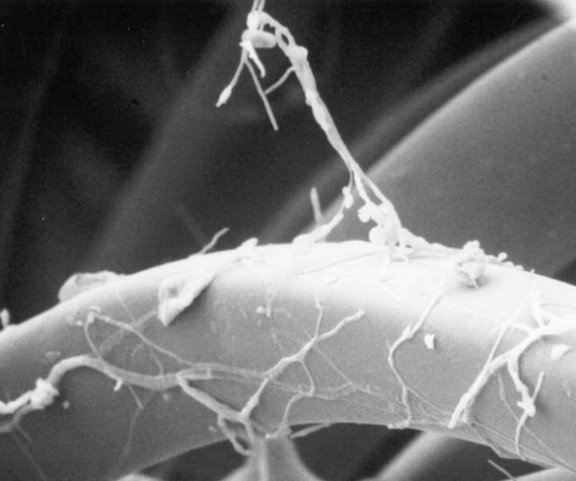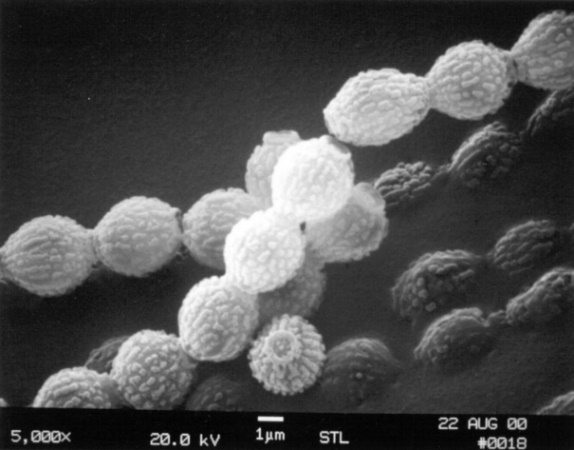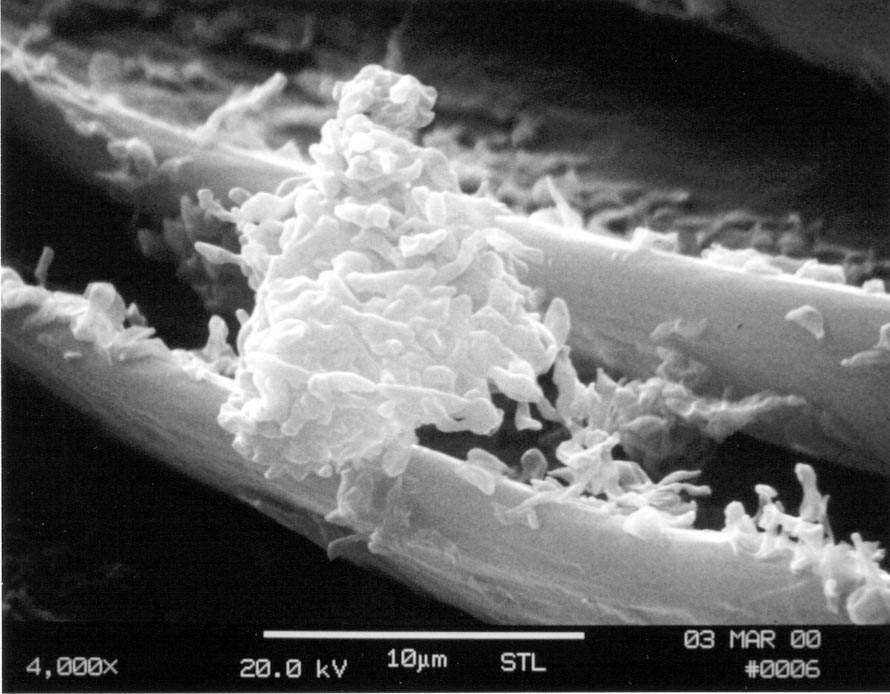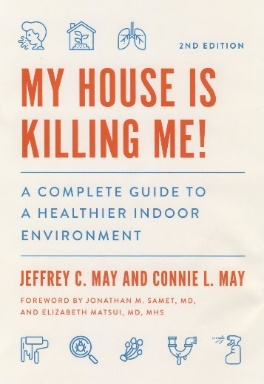Homeowner Newsletter, Fall 2024
©2024 Jeffrey C. May
Indoor airflows can carry particulates and gases, and these substances can make sensitized people experience headaches, allergy or asthma symptoms, and even fatigue.
Like water, air is a fluid, and it ebbs and flows the way water does. We can feel the flow of air when it is windy outside, and we can see bits of dust, flower petals, or leaves that airflows outside can carry. We do not always feel the flow of air when we are indoors, though, unless we are standing in front of a fan or over a supply duct when the heat or air conditioning is running. Even in quiescent conditions, air will flow within a building, because warmer air rises and cooler air sinks, creating a convective cycle of air movement. (Within a room, air that is cooled at an exterior wall – a wall that faces the exterior – sinks to the floor, and warmer air that is next to a heat source or that is heated by the sun rises to the ceiling, again creating a convective cycle of air movement.)
Air in a building flows from bottom to top and out due to the “stack effect.” This movement is particularly strong during the heating season, when warm air rises up to the top levels of the house and leaks through gaps and openings to the exterior, and air from the basement rises up to take its place.
Warm air rises. In addition, air will flow from high pressure to low pressure, so as air flows out of the house at the top level, the air pressure is lowered above-grade (above ground level). The air pressure in the basement is then higher than the air pressure in the rooms above, so basement air will flow upward.
Sampling for Particulate Matter Such as Mold Spores
When people call our office to inquire about our indoor air quality (IAQ) services, many of them first say, “I’d like the air in my home sampled for mold.” Then we explain that yes, air samples can be helpful because they indicate what people in the room could be inhaling, but such samples do not reveal the location of potential sources of IAQ problems. If air samples contain mold spores, where is the mold growth? If air samples contain dust-mite fecal pellets, where are the dust-mites?
Here are some examples of why air sampling alone is not sufficient.
- If a rug contains mold growth and no one steps on the rug, spores from that mold growth may not be detected in an air sample taken in that room. The rug itself must be sampled.

- I often find mold growth on the bottoms and backs of antique furniture pieces. An air sample taken in the room may not pick up any spores unless the dust on a moldy piece of furniture is disturbed.

- Dust mites are often found in beds. If an air sample is taken in a bedroom but the bed is not sampled or the bedding is not disturbed in any way, the air sample may not collect dust-mite fecal pellets.
- Exposure by inhalation to bird-bloom particles could cause the potentially life-threatening, respiratory illness hypersensitivity pneumonitis or HP. If I had not sampled a feather-filled bed pillow or down quilt but had simply taken a quiescent air sample in the room, I would not have known that a down pillow or quilt was emitting bird-bloom particles (another name for HP is “duvet lung”).

- A wool area rug or carpet can emit wool-cuticle particles and wool-cortex fibers if the fibers in the rug or carpet are deteriorating. Such particles can be irritating and if small enough, can be inhaled. If I find wool-cuticle particles and wool-cortex fibers in an air sample I take but do not sample a wool rug or carpet in the room, I will not know where such particles and fibers are coming from (remember that air flows from room to room, so a rug or carpet in an adjacent space could be the source of the particles and fibers).
Follow the Air
Sometimes people ask me to conduct an IAQ investigation in only a few rooms. I agree to do so if the problem is a building odor, because odor sources are usually concentrated in specific areas of a building. I will also do so if the concern is a basement, because basement conditions can affect the indoor air quality in a whole house. But I won’t just conduct an IAQ investigation in a bedroom or a dining room or the kitchen, because air in a home flows from room to room and level to level. If I find mold spores in a sample taken in one room, the source of the spores may be in another room.
Within a multi-unit building, air will flow from hallways into apartments if there are spaces at the bottom of apartment-entry doors. Air will flow from one apartment to another though gaps (like electric outlets) in adjoining, interior wall (walls between two apartments); and will also flow from level to level up staircases, elevator shafts, and pipe chases. That is why when I conduct an IAQ investigation in an apartment or a condominium in a multi-unit building, I will often take an air sample in the common hallway, a surface sample of a carpet in that hallway, and even an air sample from an outlet in an interior wall in that unit.
The scanning electron micrographs in this article are the property of May Indoor Air Investigations LLC and can be used only with permission. jeff@mayindoorair.com
These topics are discussed in our latest book, Edition 2 of My House is Killing Me, available on line.

SOME RESOURCES
Here are some links to articles about IAQ, available through the Environmental Protection Agency and the National Library of Medicine:
https://www.epa.gov/report-environment/indoor-air-quality
https://www.ncbi.nlm.nih.gov/pmc/articles/PMC8004912
The book “How To Operate Your Home,” by home inspector Tom Feiza (“Mr. Fix-It”), is a great resource and is available on line.
Have you been told that you need a new roof? Or a new boiler or furnace? An experienced home inspector can give you an unbiased second opinion about maintenance work you have been told your house needs or about work you wonder it may need. You can go to the American Society of Home Inspectors’ website (https://www.homeinspector.org/) to find a home inspector in your area. We may also have some names to offer you, but please note: we have no financial or business relationships with any home inspection companies.
